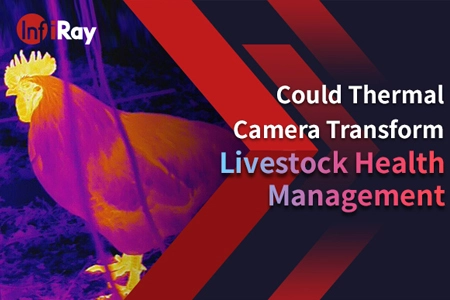The role of thermal imager in livestock health management

Animal welfare management is an important part of farming and has a direct impact on animal welfare and production. Traditionally, farmers have used hand techniques and visual checks to check their animals' health. But with the development of technology comes several new possibilities, and one of the most promising instruments is a thermal camera. In this article, we look at the potentially transformative effects of thermal camera on animal health.
The Importance of Livestock Health Management
Ensuring animal health is essential to agriculture. Healthy animals help improve productivity, produce better products, and produce more sustainable agriculture. The present challenge is that conventional surveillance techniques are limited by their reliance on visual signs and human observations. A thermal camera works by detecting the temperature of an object. Instead of using visual cues as a conventional approach, the thermal imaging technique lets farmers see the changes in temperature in real time. The technique is valuable in every field, and there is a lot of hope for its use in animal welfare management.

The Livestock Health Management of Thermal Cameras
1. Research on Early Disease Detection
A notable benefit of thermal imaging is that it can be used to detect the symptoms of illness or infection at an early stage. Variations in body temperature usually predate obvious signs, and thermography allows the farmer to detect possible health problems ahead of time. Such early identification can greatly enhance therapeutic results and decrease the transmission of infections in flocks.

2. Monitoring Stress Levels
Animals may be under pressure because of a variety of factors, such as the overcrowded environment, or the normal way of life. Thermal cameras offer a nonintrusive means of measuring the temperature of their body. Early identification and management of stress can increase the general welfare of the animals and avoid possible health problems.
3. Environmental Condition Assessment
Thermal cameras can also be used to evaluate housing and environmental conditions. Through the visualization of the thermal model, the peasants will be able to find places where there is insufficient ventilation, isolation problems, or faulty equipment. By actively dealing with those problems, it is possible to create a more pleasant and favorable environment for cattle, which will have a positive effect on their health and productivity.

Although thermal cameras provide significant benefits, their integration into animal health management is not without challenges. Consideration will be given to the start-up costs and the potential privacy issues. Nevertheless, continuing technological progress and greater knowledge are easing the problems. There is a chance that more sophisticated thermal techniques will be used in the future in animal health management. Continued cooperation among tech makers and agriculture specialists is crucial.
Integrating thermal cameras into animal welfare management could potentially revolutionize the methods used by farmers to supervise and manage their animals. It has a wide range of applications from early diagnosis to stress monitoring and environmental evaluation. Although there are challenges, technical progress and positive results reported by early users highlight the transformation effect of thermal cameras in improving animal welfare as a whole.











